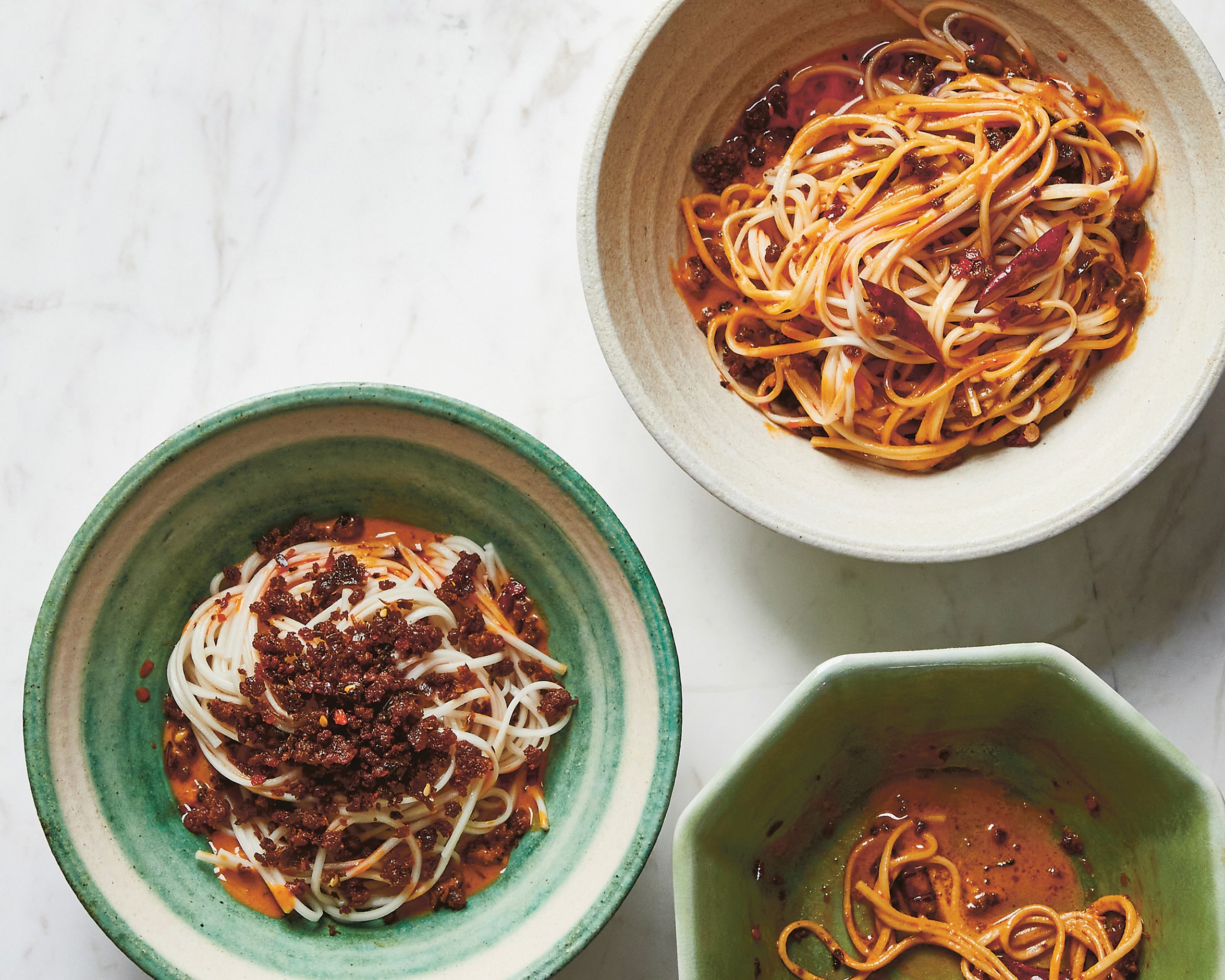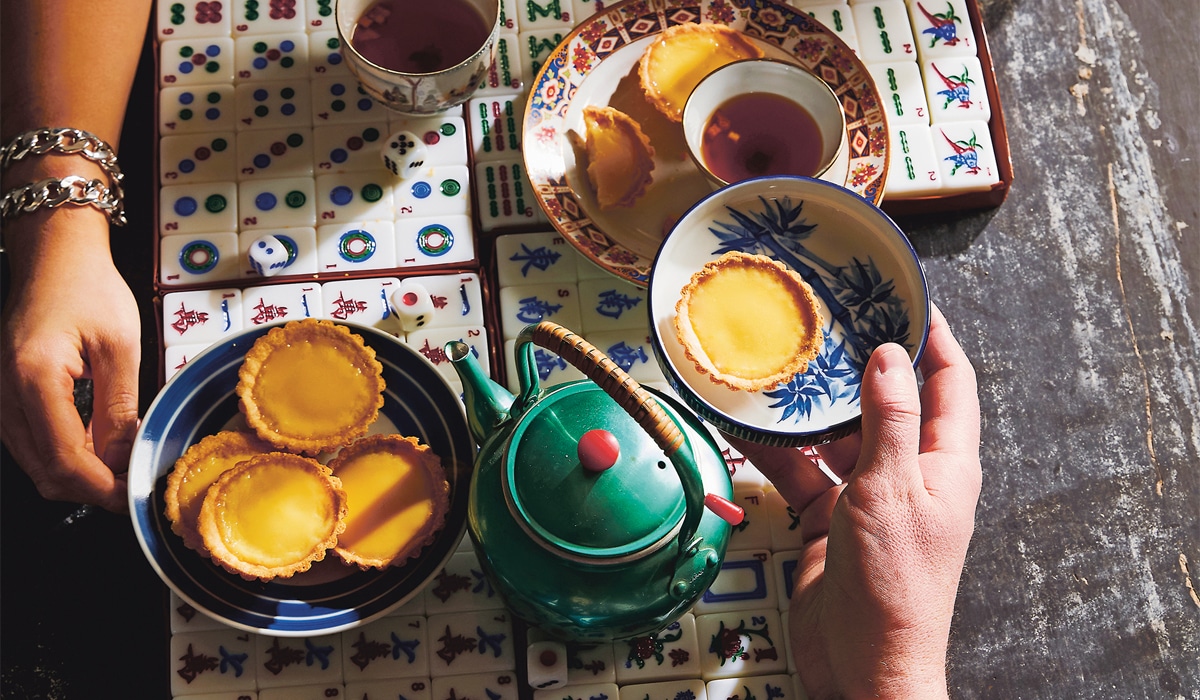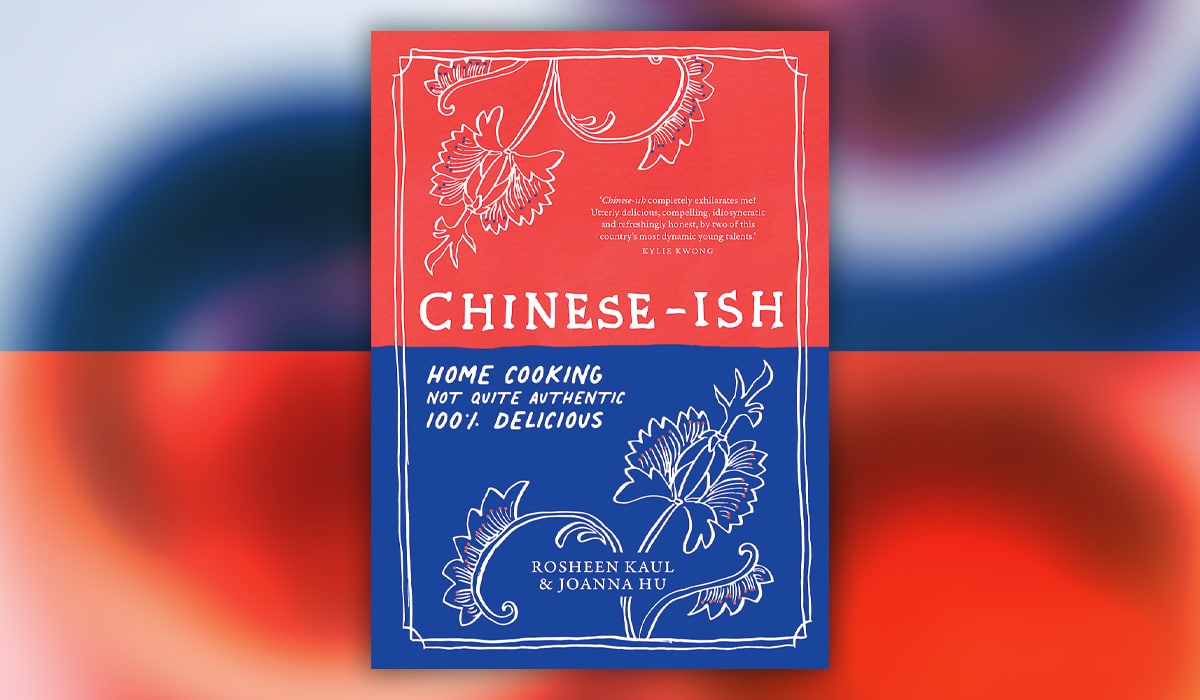100% Delicious home-made recipes, Chinese-ish is filled with tips, advice and a lot of heart.
As immigrants with Asian heritage who both moved to Australia as kids, friends Rosheen Kaul and Joanna Hu have formed their identities through food. ‘Chinese-ish’ is their home cooked, not quite authentic but 100% delicious love letter to their identities.
‘Slurpy-crispy-spicy perfection’, that’s how friends Rosheen Kaul and Joanna Hu describe dan dan mian, their beloved childhood dish of wheat noodles lathered with sesame paste and topped with crunchy pork mince. With a description like that, who wouldn’t want to try their hand at recreating this dish, too?
In an ideal world, we would all have a pantry filled to the brim with the spices, condiments and essential veggies, meats and starches that form the base of the kaleidoscope of Asian dishes that have grown in popularity across the world.
Alas, that is not the case for everyone. For a cheat’s version inspired by dan dan mian, try this recipe created by Balanced Life and you, too, can enjoy the essence of this dish.
Homemade chilli crisp

Serves 2
This simple sprinkle delivers on fragrance, heat and texture! Add to stir-fries, noodles, dumplings and dipping sauces or even sandwiches for a bit of heat and extra crunch.
Ingredients
2 cups canola oil
1 packet of shallots or spring onions, thinly sliced
2 garlic bulbs, peeled and thinly sliced
Knob of fresh ginger, cut into match sticks 8cm long
1 cinnamon stick
6 star anise
4 cardamom pods
1 bay leaf
1⁄2 cup chilli flakes
2 tbsp Szechuan or mixed peppercorns, crushed
1 tsp ground cumin
2 tbsp soya sauce
2 tbsp honey or sugar
1 tbsp miso paste (optional)
1⁄2 cup roasted peanuts
Method
- Place all the oil in a pot over medium heat.
- Fry the shallots, or spring onions, in batches for about 8 minutes or until golden and crispy. Drain on kitchen paper.
- Using the same oil, fry the garlic for 3-4 minutes. Drain on kitchen paper.
- Add the ginger to the oil and fry for about 5 minutes, and drain.
- Carefully strain the oil to remove any burnt pieces and return the oil to the pot. 6. Add the cinnamon, star anise, cardamom, and bay leaf to the pot of oil. Allow to infuse over low heat for at least 5 minutes.
- Remove the spices with a slotted spoon.
- Turn up the stove’s heat until the oil reaches 180°C (use a thermometer) and keep it at that temperature for about 5 minutes to ensure even heat.
- Combine the chilli flakes, peppercorns, cumin, soya sauce, miso paste (if using) and peanuts in a large 2L heat-proof bowl.
- Pour the hot oil over the peanut mixture. Work slowly to avoid splattering as the mixture will bubble up slightly.
- Stir in the crispy shallots, ginger and garlic.
- Allow to cool completely before transferring into a jar. Store in the fridge for up to three months.
Food tip
You can find ya cai (Szechuan pickled vegetable) and Szechuan chilli powder at most Asian grocers.
Cheat’s egg custard tart

Makes 12
‘My cooking revolves around my inherent impatience (read: laziness). When I am hit with a craving for something specific, I want it as soon as possible.
That being said, my little hacks and shortcuts come from a good place, and I wouldn’t make any adjustments that resulted in a sub-par recipe. I have some pride, after all.
The humble custard tart makes appearances in many different cultures, most famously as the Portuguese pastel de nata. The egg custard tart made its way to Hong Kong from the nearby Portuguese colony of Macao and the Cantonese transformed it by adding more egg yolks and decreasing the sugar and dairy. The result is a delicate, eggy custard with only a gentle sweetness, encased in a flaky tart shell. Traditional Chinese puff pastry is incredibly difficult to make. Using ready- made shortcrust pastry is foolproof and puts a still-warm, freshly baked egg custard tart in easy reach of everyone.’ — Rosheen Kaul
Ingredients
For the custard
75 g caster sugar
150 ml hot water
2 eggs
60 ml condensed milk
1⁄2 tsp vanilla extract
For the pastry
Vegetable oil, for brushing
2 sheets shortcrust pastry
Method
For the custard
- Dissolve the sugar in the hot water in a saucepan over low heat, stirring to make a syrup.
- In a bowl, whisk the eggs, condensed milk and vanilla essence together to combine.
- While whisking continuously, slowly pour the sugar syrup into the egg mixture.
- Strain into a jug and allow to stand until the air bubbles dissipate. Set aside.
For the pastry
- Preheat the oven to 200°C.
- Lightly brush a 12-hole muffin tin or 12 fluted individual tart tins with oil. Cut the pastry sheets into 12 even squares and press them into the greased tins, trimming off any excess. Chill in the fridge for 15–20 minutes.
- Line the pastry shells with baking paper and fill with pastry weights or uncooked rice.
- Blind-bake for 10 minutes, then carefully remove the paper and weights and bake for another 3–4 minutes, until golden. Set aside to cool.
To assemble
- Reduce the oven temperature to 140°C and divide the custard equally between the shells.
- Bake the tarts on the lowest shelf of your oven for 20–25 minutes, until the filling is just set.
- Remove from the oven and allow to rest for about 15 minutes.
- Enjoy the tarts while still warm.
Food tip
Pasteis de nata are traditionally served with a dusting of cinnamon. If you’re a fan of the spice, try a sprinkle on these tarts, too.
Crisp cereal butter prawns

Serves 4
‘If you associate the word “cereal” with Weet-Bix, Nutri-Grain or Froot Loops, then cereal butter prawns might sound like a pretty horrid concept. In reality, this crunchy, buttery, aromatic savoury dish is another Singaporean food stall favourite.
To achieve the crunchy coating, it’s customary to use Nestum (a coarsely milled mixed-grain cereal) tossed through butter that has been spiked with bird’s eye chillies and aromatic curry leaves. It’s nice to stick to the original method by keeping the shells on the prawns, as these impart a much deeper flavour. However, you’re welcome to peel the prawns before cooking, if you like — just be wary of overcooking them. — Rosheen Kaul
Ingredients
500 g raw prawns or shrimp
1 tsp salt
1 tsp caster sugar
1 egg, whisked
2 tbsp plain all-purpose flour
2 tbsp cornflour
Vegetable oil, for shallow frying, plus 1 tablespoon extra
1 tbsp milk powder
1 tbsp chicken stock powder
105 g Nestum cereal or quick oats
30 g butter
15 curry leaves
2 bird’s eye chillies, sliced
Method
- Use a pair of sharp kitchen scissors to trim the legs and feelers off the prawns.
- Place the prawns in a bowl and season with the salt and caster sugar.
- Pour the whisked egg over the top and toss to coat.
- Sift the flour and cornflour together over the prawns and stir to combine.
- In a wok, heat enough oil to shallow-fry the prawns.
- Fry the prawns in batches until crispy, then set aside to drain on a wire rack.
- Mix the milk powder, chicken stock and Nestum or oats in a bowl to combine.
- Heat the extra oil and the butter in a frying pan over medium heat.
- Add the curry leaves and chilli, frying until fragrant.
- Add the Nestum or oats mixture and toast, continuously stirring, until golden. 11. Add the prawns and toss to coat evenly.
- They are best served hot.
Stirring the melting pot
The first pages of ‘Chinese-ish’ were written during the early weeks of the pandemic. Chef Rosheen Kaul began taking note of all the ‘inauthentic’ Asian recipes she loved to eat and asked her friend Joanna Hu to illustrate them.
The friends explain that they both spent their formative years living between a few cultures and wondering where they fitted in. For them, food was a huge part of this journey. They asked themselves: should they cling to the traditional comfort of their parents’ varied culinary heritage, attempt to assimilate wholly by learning to love shepherd’s pie, or forge a new path where flavour and the freedom to choose trumped authenticity? They chose option three.
This book really is ‘not quite authentic’, 100% delicious home cooking. They offer up tips, advice and a lot of heart.

Chinese-ish (R505) Murdoch Books






